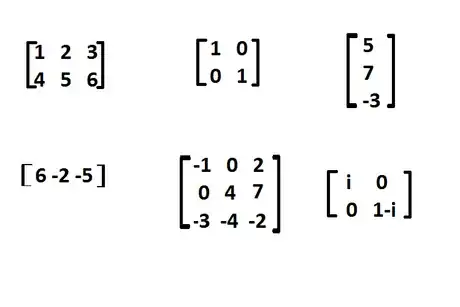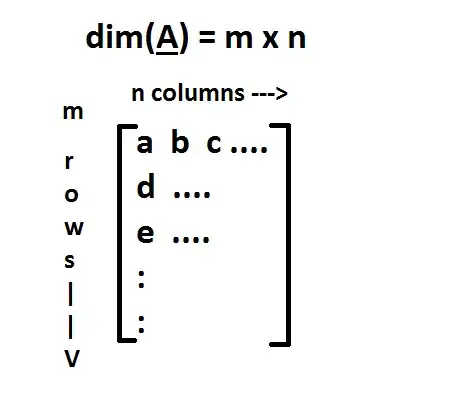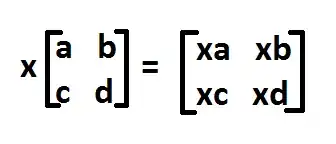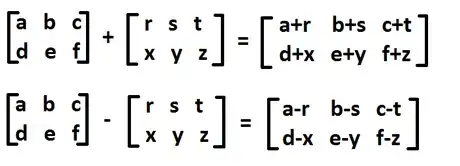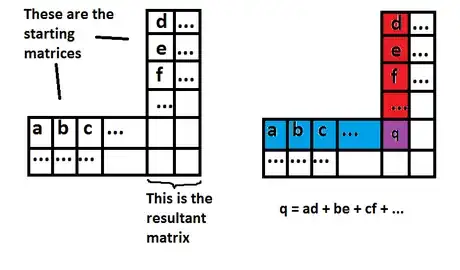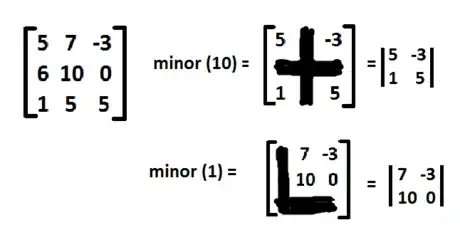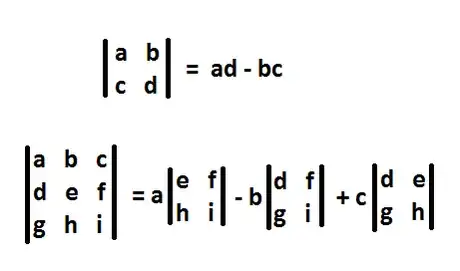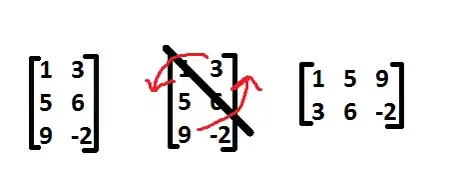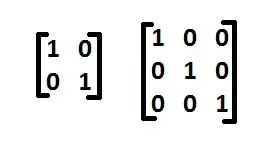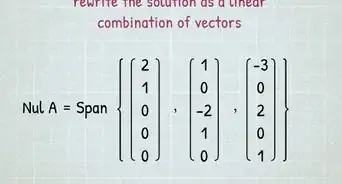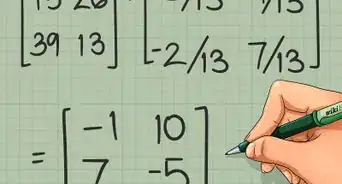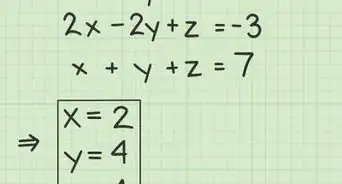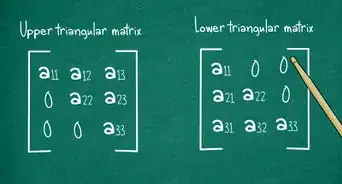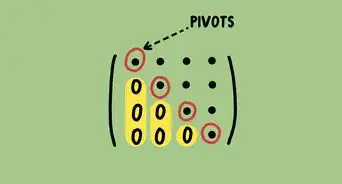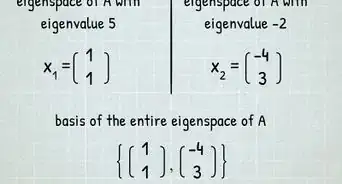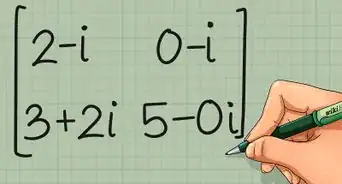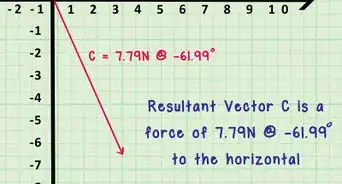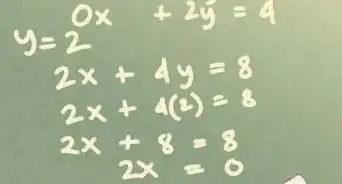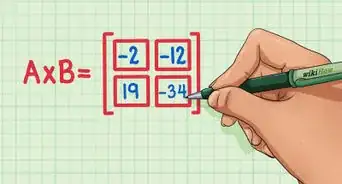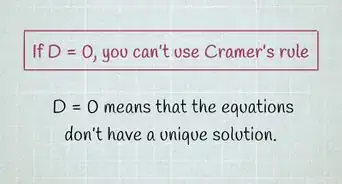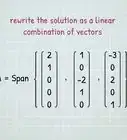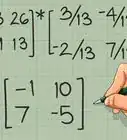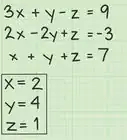X
wikiHow is a “wiki,” similar to Wikipedia, which means that many of our articles are co-written by multiple authors. To create this article, 9 people, some anonymous, worked to edit and improve it over time.
This article has been viewed 53,749 times.
Learn more...
A matrix - nothing to do with "The Matrix" - is an array of numbers. They are very useful in a number of fields. They are commonly used in physics - the existence of antimatter was first theorized by matrices. they also come up in vector graphics a lot, as matrices can be used to apply transformations to a set of vectors.
Steps
-
1Understand what a matrix is. A matrix is a collection of numbers, called elements, arranged in a rectangle or a square. The numbers do not have to be positive, and they can be decimals or even complex numbers. A square matrix is, as the name suggests, a matrix that is square in shape, with the same number of columns and rows. In algebra, a matrix is usually represented by a capital letter in bold or underlined. The numbers in a matrix are surrounded by square (or curved, sometimes, but not curly) brackets.
-
2Learn what is meant by the dimension of a matrix. The dimension of matrix A, dim(A), is how many rows and columns it has. dim(A) = m x n represents a matrix with m rows and n columns.Advertisement
-
3
-
4Learn how to add and subtract two matrices. Simply add or subtract the relevant elements. The matrices must have the same dimensions if you are to add or subtract them. In other words, A+B and A-B exist if and only if dim(A) = dim(B).
-
5Learn that matrix multiplication has a few quirks that aren't found in scalar multiplication:
- You can only multiply two matrices AxB if dim(A) = m x n and dim(B) = n x p
- AxB is not the same as BxA.
- The resultant matrix has dimensions dim(C) = m x p, so it isn't the same size as the starting matrices (unless you are multiplying square matrices).
- If AxB is possible, BxA is only possible if m = p
- However, in common with scalar multiplication, Ax(BxC) = (AxB)xC, and Ax(B+C) = AxB + AxC
-
6Learn how to multiply two matrices. This can be a bit tricky until you get the hang of it. For AxB:
- Draw the matrices into a grid, like the one on the left of the photo. A goes on the left and B goes on top.
- For each element in the resultant matrix, consider the column and row that it is in.
- Multiply the first element in the row by the first element in the column. Do this for the second elements, and the third, and so on.
- Add up the products of the elements. This is the value of the element in the resultant matrix.
- Do this for each element in the resultant matrix.
-
7Learn what a "minor" is. The minor of an element of a matrix is the determinant of the matrix that is left when you erase the row and column containing that element.
-
8Learn how to calculate the determinant. This is a value that is used in calculating the inverse of a matrix. It is usually written as det(A) or |A|. If you see a matrix with lines instead of square brackets, it means the determinant of that matrix. The determinant only exists for square matrices. For a 2x2 matrix, the determinant is simply ad-bc. For a 3x3 matrix, it's a bit trickier: a x minor(a) - b x minor(b) + c x minor(c)
-
9Learn what a "cofactor" is. A cofactor of an element is related to the minor of that element. You need to know the position of the element in the matrix. Say the element is in the first row and second column. It's position is 1,2. For an element at position i,j, calculate (-1)(i+j). The cofactor is the minor multiplied by this value.
-
10Learn how to take the transpose of a matrix. The transpose of a matrix, AT, is the matrix that you get when you flip A around its diagonal axis. Rows become columns and columns become rows.
-
11
-
12Finally, learn how to take the inverse of a matrix. The inverse of a matrix, A-1, reverses the effect of the matrix A. Multiplying the two together cancels them out, leaving the identity matrix. To take the inverse:
- Calculate |A|
- Calculate the cofactor of every element in the matrix.
- Replace every element in the matrix with its cofactor. This is matrix C.
- A-1 = CT/|A|
Advertisement
Community Q&A
-
QuestionThis article made it so easy how to learn basics of matrices, thank you!
 Community AnswerWe're glad it was useful for you. It's helpful to let others know that an article is useful, it provides additional confidence in its outcome.
Community AnswerWe're glad it was useful for you. It's helpful to let others know that an article is useful, it provides additional confidence in its outcome. -
QuestionHow would I assign signs in an inverse of 33 matrices?
 TomPNTop AnswererYou could calculate it with cofactors, or you could remember the Rule of Alternating Signs: The first element is positive, second is negative, third positive et cetera.
TomPNTop AnswererYou could calculate it with cofactors, or you could remember the Rule of Alternating Signs: The first element is positive, second is negative, third positive et cetera. -
QuestionWhat is scalar matrix?
 PimemorizedTop AnswererA scalar matrix is a square matrix that is a multiple of the identity matrix. In other words, the values on the main diagonal are all the same number, and every other value not on the main diagonal is zero.
PimemorizedTop AnswererA scalar matrix is a square matrix that is a multiple of the identity matrix. In other words, the values on the main diagonal are all the same number, and every other value not on the main diagonal is zero.
Advertisement
About This Article
Advertisement
